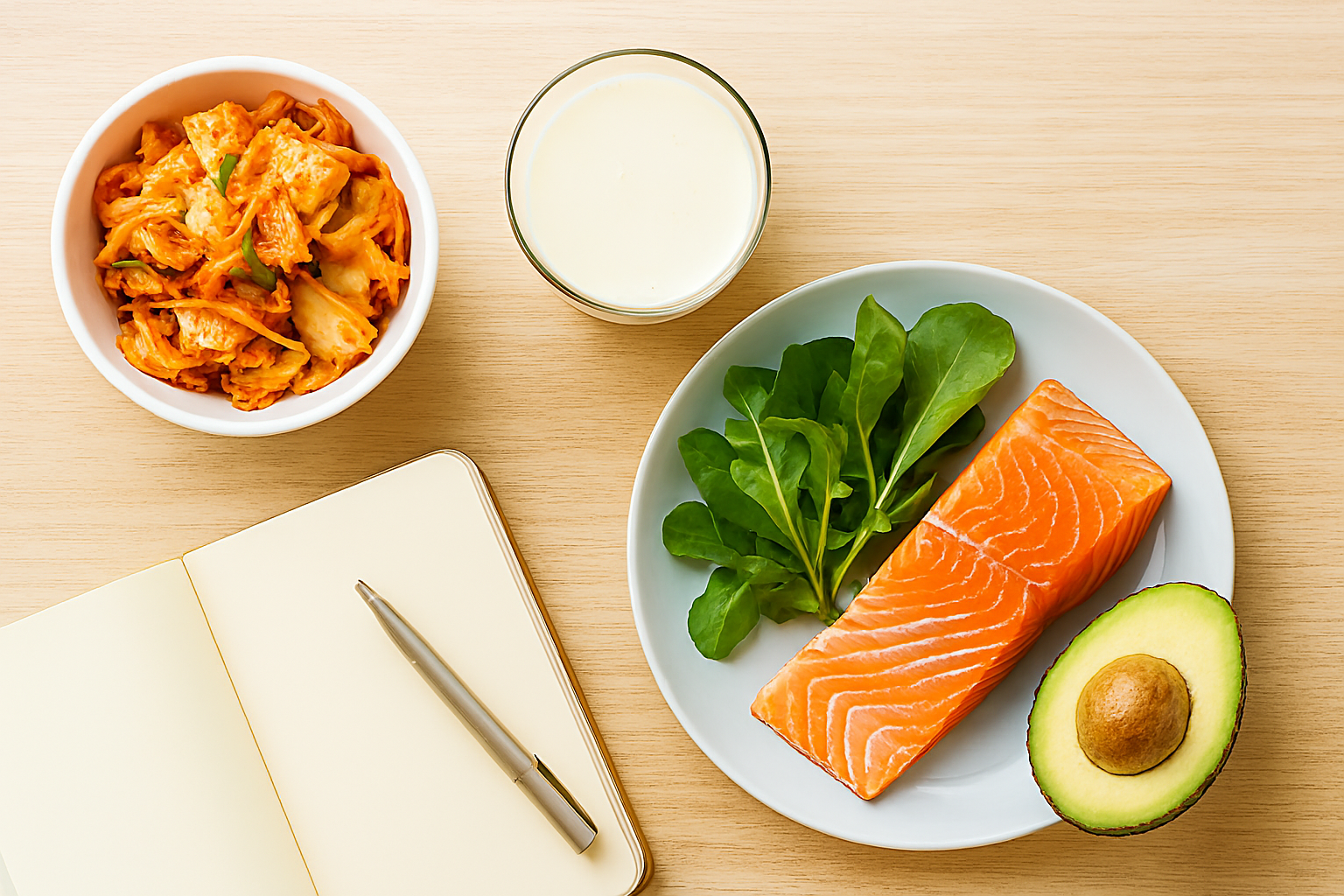The Gut-Skin Connection That Cleared My Acne After 15 Years

I will never forget standing in my bathroom, staring at my reflection with tears streaming down my face. At 32 years old, I was still battling the same painful, cystic acne that had plagued me since my teenage years. My medicine cabinet told the story of my journey: countless bottles of serums, spot treatments, prescription retinoids, and antibiotics. I had tried it all: facials, chemical peels, elimination diets, blue light therapy, and even two rounds of a powerful medication with significant side effects.

Yet there I was, with another painful breakout along my jawline, wondering what I was still doing wrong. The question that changed everything for me was not about what to put on my skin, but what was happening deep inside my body. My journey to clear skin did not end with finding the perfect topical treatment. It began when I started looking deeper, beyond the surface, to heal from within.
The Gut-Skin Connection: Your Skin's Secret Storyteller
Our bodies are intricate ecosystems where everything is connected. The gut-skin axis is one of the most fascinating relationships within this system, a complex biological highway connecting the health of your digestive tract directly to the health and appearance of your skin.
Think of your gut as a bustling, diverse garden that houses trillions of microorganisms known as your microbiome. When this garden is thriving with a wide variety of beneficial bacteria, your whole body benefits. But when the garden becomes imbalanced, a state known as dysbiosis, with too many "weeds" (harmful bacteria, yeast, or parasites) and not enough beneficial "plants," problems begin to surface quite literally on your face.
This connection is not just a vague concept; it operates through scientifically understood pathways:
- Systemic Inflammation: Your gut lining is a crucial barrier, only about one cell thick. When it becomes irritated or compromised from things like stress, poor diet, or infections (a condition often called "leaky gut" or increased intestinal permeability), it allows undigested food particles and toxins to pass into your bloodstream. Your immune system identifies these as foreign invaders and launches an inflammatory attack. This creates a state of chronic, low-grade inflammation throughout your body that can manifest as red, painful, and inflamed skin conditions like acne, rosacea, and eczema.
- Microbiome and Hormone Regulation: The bacteria in your gut play a vital role in regulating hormones, including estrogen and androgens, which are heavily linked to hormonal acne. An imbalanced microbiome can disrupt this process, leading to hormonal fluctuations that trigger excess sebum (oil) production and breakouts.
- Nutrient Absorption: A healthy gut is essential for breaking down food and absorbing the vital nutrients your skin needs to repair and regenerate. When your gut is compromised, you could be eating a perfect diet but still be deficient in skin-critical nutrients like zinc, omega-3 fatty acids, vitamin A, and antioxidants, leaving your skin vulnerable and slow to heal.
My Journey to the Inside-Out Approach
My realization did not come overnight. It started with noticing subtle patterns. My skin would flare angrily after certain meals, particularly those heavy in dairy, sugar, or processed foods. I began connecting the dots between my digestive symptoms (persistent bloating, irregular bowel movements, occasional heartburn) and the breakouts on my face.
The turning point came after a particularly stressful month at work. My digestion felt completely out of sync, and my skin erupted in painful cysts that no topical treatment could touch. Frustrated and desperate, I made an appointment with a functional medicine practitioner who specialized in women's health.
After reviewing my extensive history of failed treatments, she suggested something no dermatologist had ever mentioned: "Your skin is not the problem; it is the messenger. It is trying to tell you something about what is happening inside. Let's focus on healing your gut first."
The approach was radically different. Instead of adding another cream, we worked on rebuilding my gut health through a personalized protocol of dietary changes, targeted supplements, and lifestyle modifications. It was not a quick fix, healing from the inside out rarely is. But within two months, something remarkable happened. Not only did my digestion improve dramatically, but my skin began to clear in a way it never had before.

8 Gut-Healthy Habits That Cleared My Skin
My journey involved several key changes. While everyone's body is different, these principles helped me achieve what countless topical treatments could not.
1. Swapping Processed Foods for Whole, Anti-Inflammatory Ones
I gradually replaced packaged snacks, refined carbohydrates (white bread, pasta), and sugar-laden treats with whole foods. I built my meals around a rainbow of vegetables, healthy proteins, and complex carbohydrates. I focused on powerful anti-inflammatory foods like leafy greens (spinach, kale), fatty fish (salmon, mackerel), turmeric, berries, and olive oil, all of which help calm the internal inflammation that can trigger breakouts.
2. Incorporating Fermented Foods Daily
Fermented foods became my skin's best friends, acting as a natural source of probiotics. I started each morning with a small serving of unsweetened Greek yogurt or coconut yogurt with live cultures. Kimchi, sauerkraut, and kefir became regular additions to my meals, introducing diverse strains of beneficial bacteria that helped restore balance to my gut microbiome.
3. Mindfully Reducing Dairy and Sugar
Through my food journal, I confirmed that dairy and refined sugar were major personal triggers. Dairy can increase levels of insulin-like growth factor 1 (IGF-1), a hormone that can stimulate oil production. Sugar fuels inflammation and can feed the harmful bacteria in your gut. I reduced them significantly and found alternatives I enjoyed, like almond milk and fresh fruit.
4. Adding a Quality Probiotic Supplement
Under the guidance of my practitioner, I started a high-quality probiotic specifically formulated with strains shown to benefit skin health, such as Lactobacillus acidophilus and Bifidobacterium bifidum. This supplementation helped repopulate my gut with beneficial bacteria more quickly while I was making dietary changes.
5. Prioritizing Prebiotic Fiber
I learned that probiotics need food to thrive, and that food is prebiotic fiber. I began incorporating more prebiotic-rich foods like garlic, onions, leeks, asparagus, bananas, and oats. These foods act as fertilizer for the beneficial bacteria, helping them multiply and crowd out the harmful ones.
6. Hydrating Intentionally for Detoxification
Water became my priority beverage. Proper hydration is crucial for supporting the body's natural detoxification pathways, particularly the liver and kidneys. When these organs are functioning optimally, they filter toxins from the blood, reducing the burden on your skin to eliminate waste through sweat and sebum. I also incorporated herbal teas known to support digestion, like dandelion, milk thistle, and peppermint.
7. Managing Stress and Improving Sleep
This was perhaps the most transformative change. Chronic stress disrupts gut function via the gut-brain axis and triggers the release of cortisol, a hormone that increases inflammation and oil production, a recipe for skin disasters. I incorporated a non-negotiable daily meditation practice, gentle yoga, and a strict screen curfew an hour before bed to improve my sleep quality. Better sleep meant more time for my skin to repair and my gut to restore.
8. Keeping a Detailed Food and Skin Journal
Tracking what I ate, my stress levels, my sleep quality, and my skin's condition revealed patterns I would never have noticed otherwise. This personalized approach helped me identify my unique triggers. For example, I discovered breakouts following artificial sweeteners and certain preservatives in packaged foods.

The Journey Takes Patience
If there is one thing I wish someone had told me earlier, it is that healing from the inside out requires patience. It took fifteen years for my skin issues to develop; resolving them could not happen overnight.
The first changes I noticed were not on my skin but in how I felt: more energy, less bloating, and an improved mood. My skin began to transform about six weeks into my gut-healing protocol. First, the deep, painful inflammation subsided. Then, gradually, the frequency of new pimples decreased. After about three months, my skin was clearer than it had been since childhood.
Today, two years later, I still get the occasional pimple when I am stressed or veer too far from my gut-supporting habits. But the devastating, confidence-crushing acne that controlled my life for fifteen years? That is gone. The beauty of this approach is that it does not just improve your skin; it enhances your entire wellbeing.





